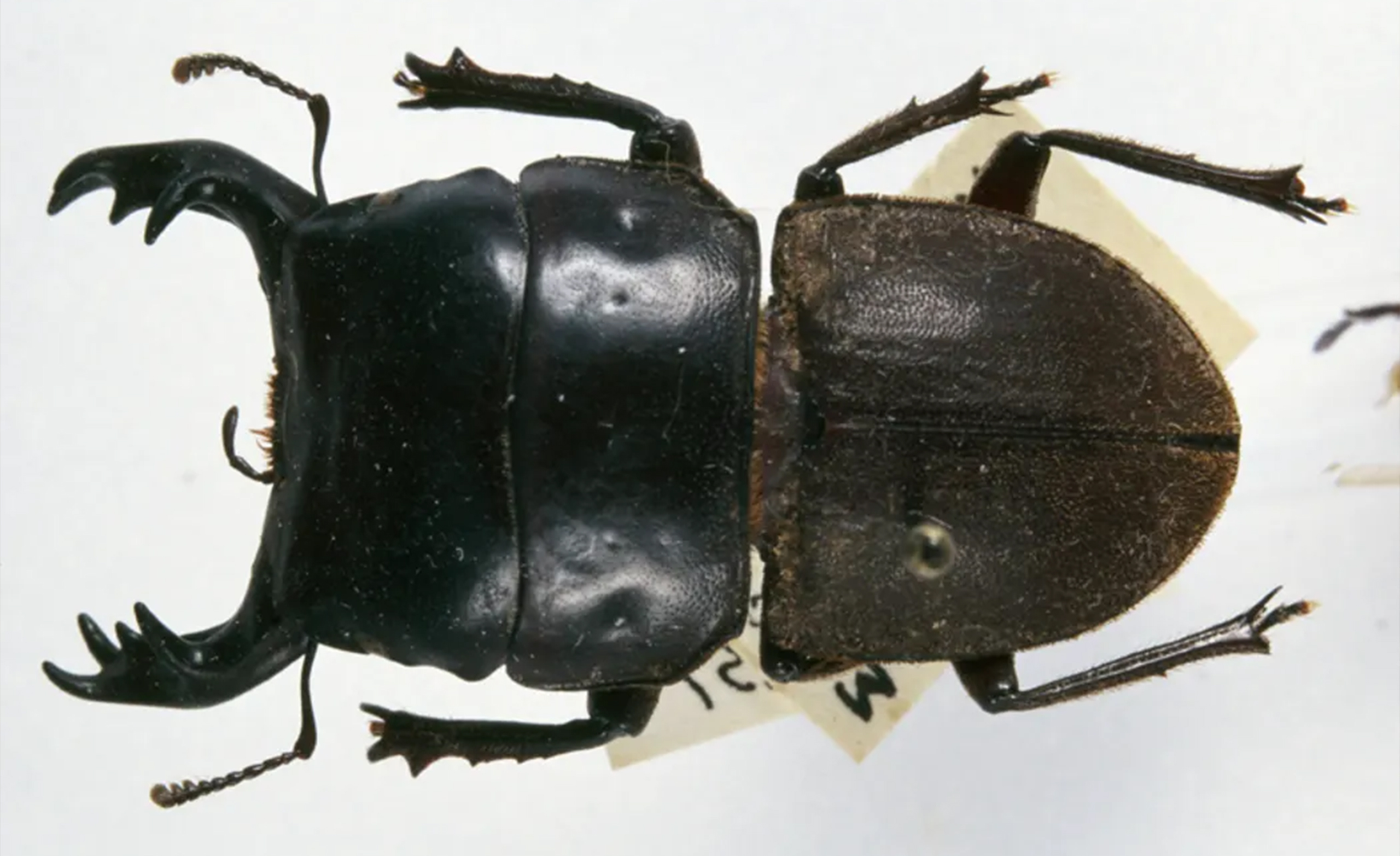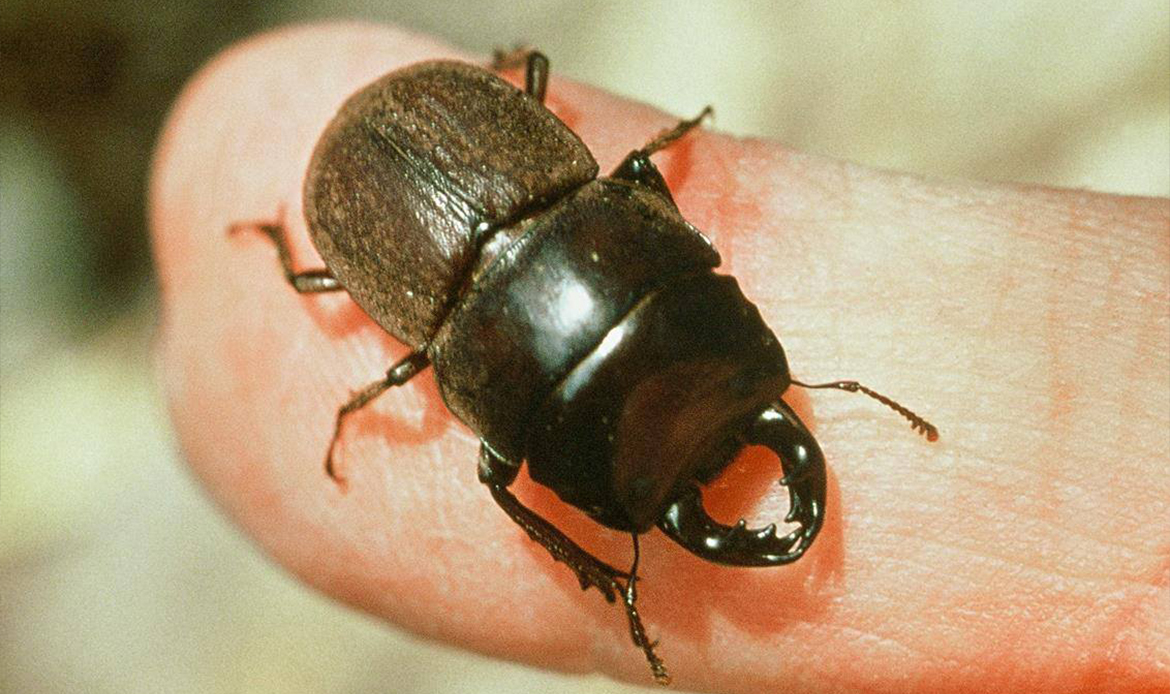
Unique Mokohinau Stag Beetle: New Zealand’s Insect in Peril
The Mokohinau stag beetle (Geodorcus ithaginis) stands as one of New Zealand’s most remarkable and critically endangered insects, confined to a living room-sized patch of vegetation on a remote sea stack known only as “Stack H”.
Table of Contents
A Distinctive Species
This impressive beetle measures up to 32mm in length for males and slightly smaller for females. What truly sets it apart from other New Zealand stag beetles is its distinctive vertical tooth atop the mandibles in both sexes. The males sport large mandibles used for fighting over mates, while their robust black exoskeleton ranges from dull to moderately glossy.
Precarious Habitat
The beetle’s last known refuge lies approximately 100 kilometers northeast of Auckland in the Mokohinau Islands. Stack H, their final stronghold, represents an incredibly vulnerable ecosystem. Unlike mainland stag beetles that thrive in rotting logs, the Mokohinau stag beetle has adapted to survive in:
- Peat-like soil beneath New Zealand ice plant (Disphyma australe)
- Tussock grass (Chionochloa bromoides)
- Leaf litter under coastal pohutukawa trees
Historical Decline
The species’ discovery dates back to the 1880s when lighthouse keeper Andreas Sandager first documented it. After sporadic sightings in 1902, the beetle vanished until its rediscovery in 1984. Subsequent surveys in the early 1990s revealed only three live specimens, with the maximum number ever observed simultaneously being just nine beetles.
Conservation Challenges
Multiple factors threaten this unique species’ survival:
- Habitat Modification: The Mokohinau Islands have suffered extensive damage from land clearance and burning.
- Invasive Species: While kiore (Polynesian rats) have been eradicated, their historical presence devastated beetle populations.
- Climate Change: Rising temperatures risk drying out the beetle’s already limited habitat.
- Poaching Threats: Rare stag beetles can fetch $500-1000 on the black market, making them targets for illegal collection.

Recent Conservation Efforts
A January 2019 expedition to Stack H painted a grim picture. Despite thorough searches by experts, only fragments of exoskeletons were found, raising fears about the species’ possible extinction. The Department of Conservation (DOC) had planned captive breeding programs and potential reintroduction to rat-free islands, but budget constraints and reduced staff have hampered these efforts.
Hope for Survival
Despite the dire situation, some hope remains. The species’ biology presents unique challenges for confirmation of extinction:
- Beetles spend more time as larvae than adults.
- The duration of their larval stage remains unknown.
- They could potentially remain undetected for extended periods.
Conservation Implications
The plight of the Mokohinau stag beetle highlights broader challenges in invertebrate conservation:
- Limited public awareness and support compared to charismatic vertebrates.
- Reduced funding for invertebrate research and monitoring.
- Need for comprehensive habitat protection strategies.
Future Prospects
Conservation experts suggest several priority actions:
- Continued monitoring of Stack H.
- Development of captive breeding protocols.
- Protection of remaining habitat.
- Enhanced public education about invertebrate conservation.
Conclusion
The Mokohinau stag beetle serves as a powerful symbol of New Zealand’s unique but threatened invertebrate fauna. Its predicament highlights the urgent need for increased conservation efforts and public awareness to prevent the loss of such remarkable species.
Time will tell if this remarkable insect can maintain its tenuous hold on existence in its tiny island refuge. Its fate may well represent the future of countless other specialized invertebrate species facing similar challenges in our changing world
